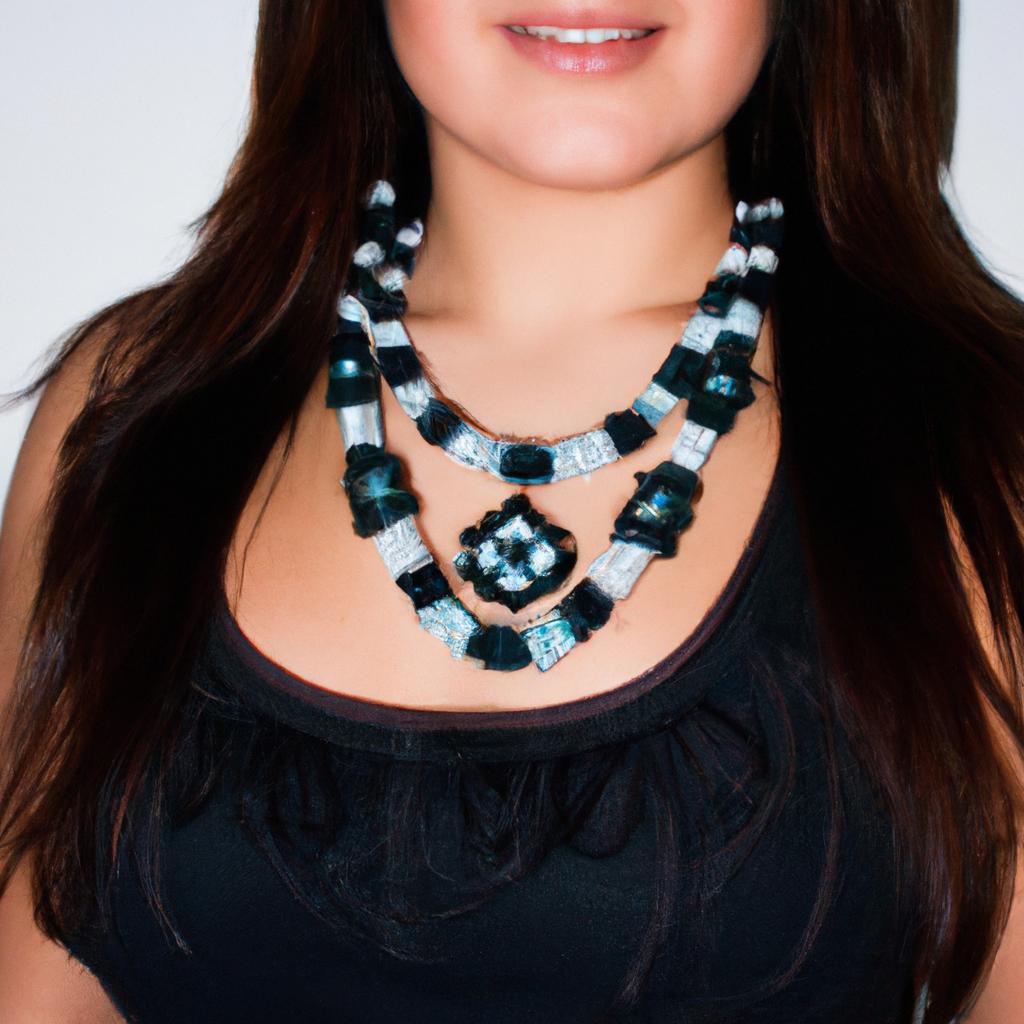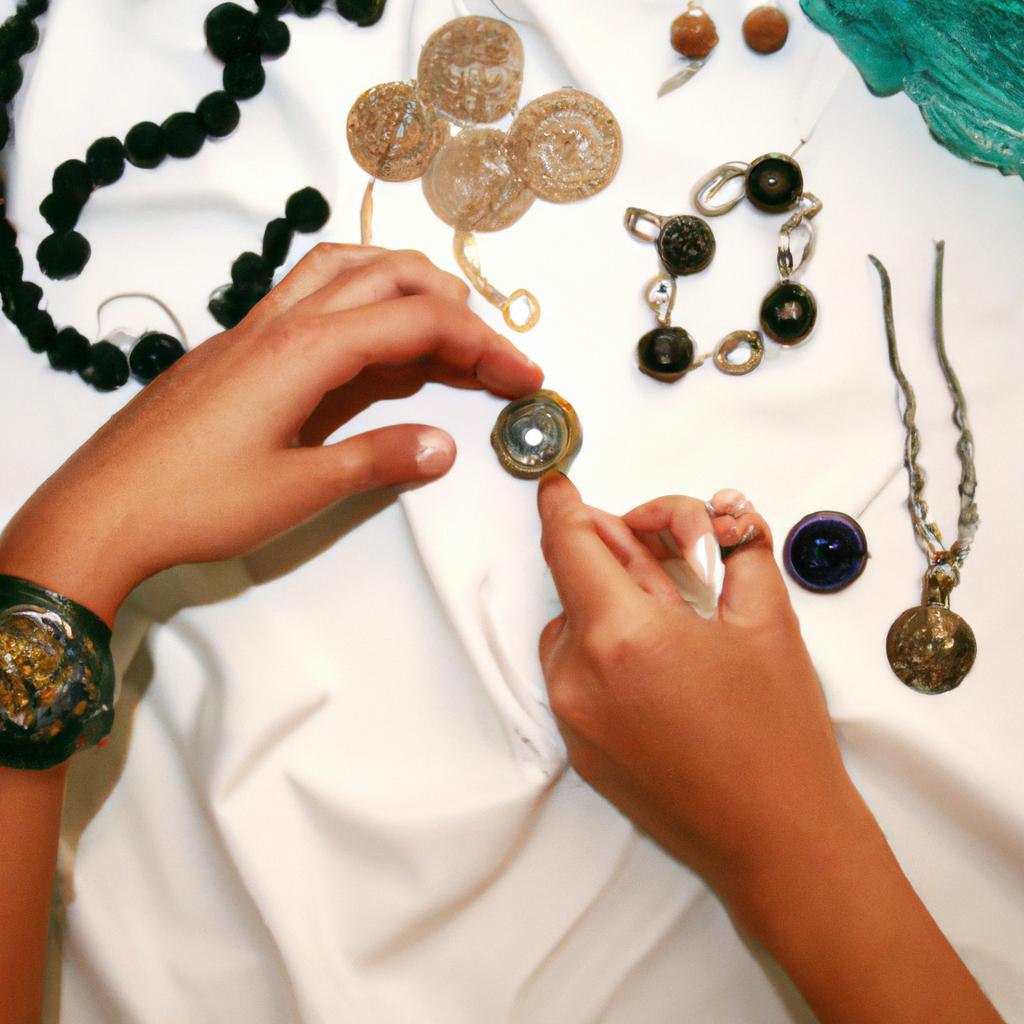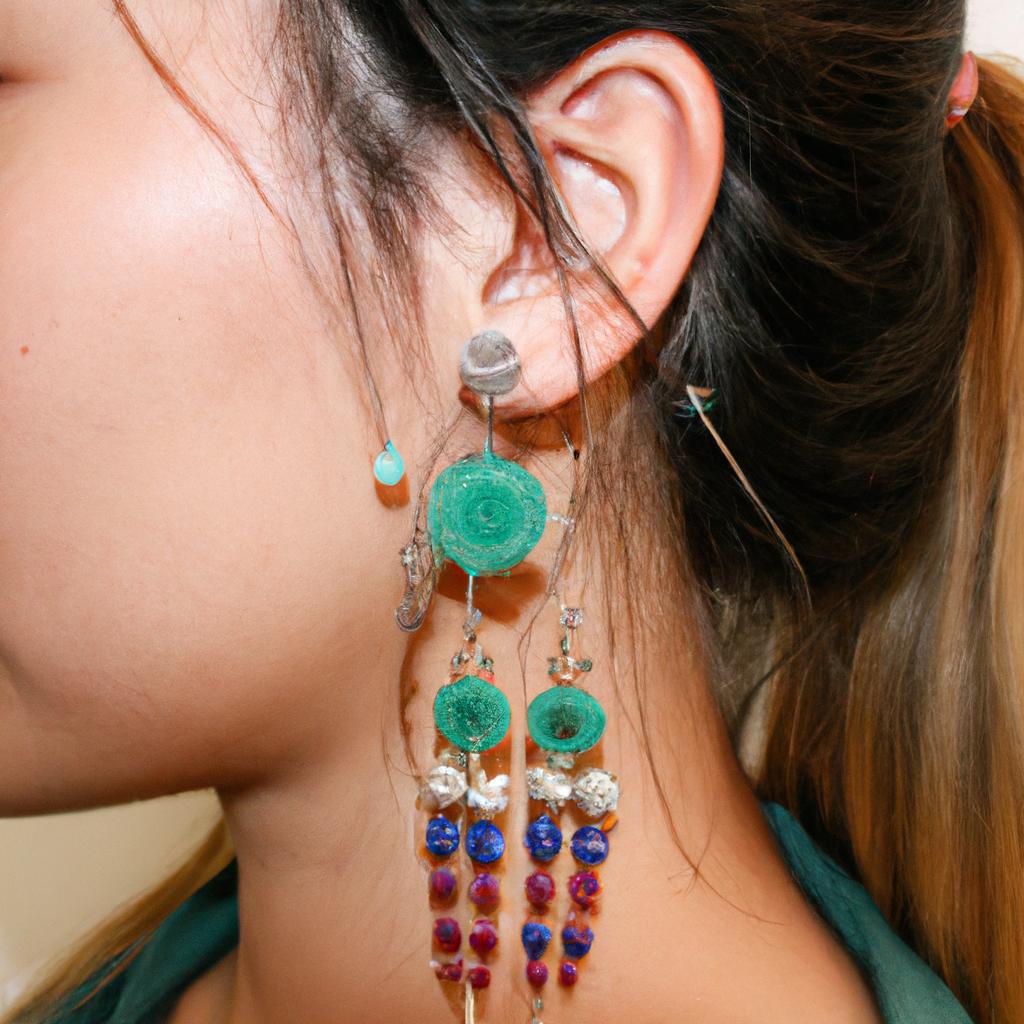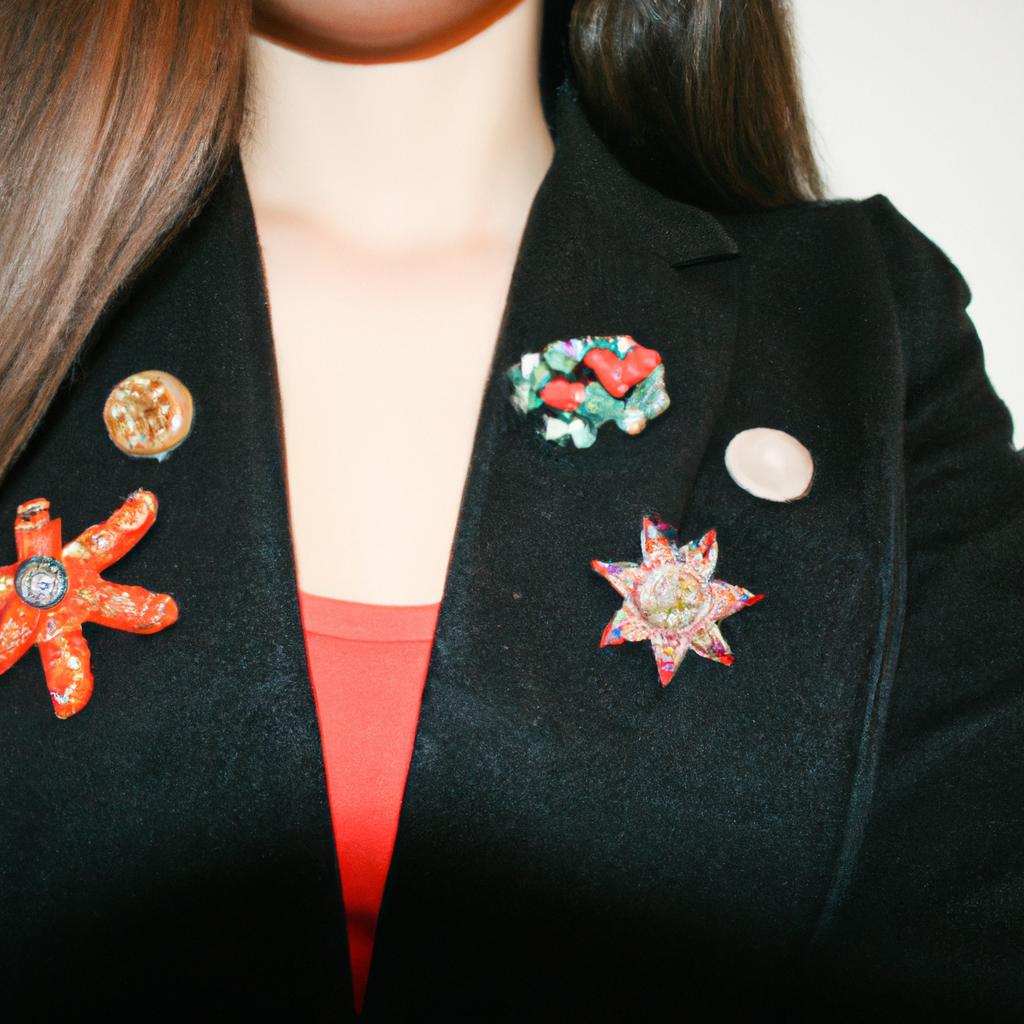Bracelets have long been regarded as an essential accessory in the realm of jewelry. This article aims to provide a comprehensive guide to understanding and appreciating the significance of bracelets as an integral part of personal adornment. From their historical origins to their diverse styles, materials, and cultural associations, this exploration will shed light on the multifaceted nature of bracelets within the context of fashion and self-expression.
To illustrate the enduring appeal of bracelets, consider the hypothetical case study of Sarah, a young professional seeking to enhance her wardrobe with accessories that reflect her personality. As she navigates through various options available in the market, Sarah finds herself drawn towards different types of bracelets – beaded ones for casual outings, sterling silver cuffs for formal occasions, or delicate gold chains for everyday wear. Through her choices, Sarah not only adds visual interest to her ensembles but also communicates aspects of her individuality and style preferences without uttering a single word. In this manner, bracelets acquire symbolic importance beyond their aesthetic allure by serving as silent communicators of one’s identity and taste.
Types of Bracelets
Imagine a woman attending a formal event, adorned in an elegant evening gown. Her wrist is graced by a delicate diamond tennis bracelet, sparkling with every movement she makes. This scenario illustrates just one example of the countless types of bracelets available in the world of jewelry accessories. From casual to high-end designs, these versatile adornments come in various styles and materials to suit individual tastes and occasions.
When exploring the realm of bracelets, it becomes evident that they can be categorized into four main types:
-
Bangles: These solid circular bands are typically made from metal or plastic and do not have any clasps or hinges. They are slipped over the hand onto the wrist and can range from simple designs to intricate patterns embellished with gemstones or engravings. Bangles offer an effortless way to add a touch of elegance or bohemian flair to any ensemble.
-
Chain Bracelets: Composed of interconnected links, chain bracelets offer flexibility and often feature decorative charms or pendants attached at intervals along the chain. With variations such as cable chains, rope chains, and Byzantine chains, this style offers endless possibilities for personalization.
-
Beaded Bracelets: As their name suggests, beaded bracelets consist of beads threaded together on elastic cords or wires. These beads can be crafted from a variety of materials such as precious stones, glass, wood, or even seeds. Beaded bracelets provide an opportunity for self-expression through color combinations and unique bead shapes.
-
Cuff Bracelets: Cuffs are wide bands that encircle the wrist without completely enclosing it like bangles do. They often feature intricate designs carved into metals such as silver or gold, making them statement pieces capable of adding sophistication to any outfit.
To further illustrate the diversity within each category mentioned above, consider Table 1 below:
Table 1: Examples of Different Types of Bracelets
| Type | Material | Design Features |
|---|---|---|
| Bangles | Gold, Silver, Plastic | Engravings, Gemstone Embellishments |
| Chain Bracelets | Sterling Silver, Rose Gold | Charms, Pendants |
| Beaded Bracelets | Glass, Precious Stones | Elastic Cord/Wire |
| Cuff Bracelets | Brass, Copper | Carved Designs |
By understanding the different types of bracelets available and their unique characteristics, individuals can select accessories that truly reflect their personal style and complement any occasion. In the subsequent section about “Choosing the Right Bracelet,” we will delve into factors to consider when making a selection.
Now that we have explored the various types of bracelets and their distinctive features…
Choosing the Right Bracelet
Types of Bracelets can vary greatly in design, materials used, and cultural significance. One popular type is the charm bracelet, which allows wearers to personalize their accessories by adding small trinkets or charms that hold sentimental value. For instance, imagine a woman named Sarah who has a silver charm bracelet adorned with miniature representations of her favorite hobbies and cherished memories. This unique piece serves as both a fashion statement and a conversation starter.
When choosing the right bracelet for yourself or as a gift, there are several factors worth considering:
- Style: Different bracelets suit different styles, from elegant and minimalist designs to bold and extravagant ones. Consider your personal taste and how well the bracelet complements your overall look.
- Size: Ensure that the bracelet fits comfortably around your wrist without being too loose or tight. Some bracelets come with adjustable clasps or stretchy bands for flexibility.
- Occasion: Consider where you plan to wear the bracelet. A delicate gold chain may be perfect for formal events, while a stackable set of beaded bracelets could be more suitable for casual outings.
- Meaning: Certain types of bracelets hold symbolic meanings based on their cultural origins or historical significance. Researching these meanings can help you choose one that resonates with your values or interests.
To illustrate further, let’s take a closer look at some common types of bracelets along with their distinguishing features:
| Bracelet Type | Description | Popular Materials |
|---|---|---|
| Bangle | Rigid circular band worn singly or stacked | Gold, silver, enamel |
| Tennis | Flexible chain-like design with gemstone settings | Sterling silver, white gold, diamonds |
| Cuff | Open-ended bracelet often featuring ornate ends | Brass, copper, leather |
| Beaded | String of beads threaded together | Gemstones, pearls, wood, glass |
By carefully considering these factors and exploring the diverse array of bracelet types available, you can confidently select a piece that aligns with your personal style and preferences. In the upcoming section on “Popular Bracelet Materials,” we will delve deeper into the various materials used in crafting bracelets to help you make an informed decision.
Popular Bracelet Materials
Having understood the importance of selecting the right bracelet, let us now delve into the various materials commonly used in their construction.
Bracelets are crafted from a wide range of materials, each with its unique properties and aesthetic appeal. For instance, consider a hypothetical scenario where Sarah is searching for a bracelet that perfectly complements her elegant evening gown. She wants something luxurious yet understated, so she opts for a stunning 14k gold bangle adorned with delicate diamonds. This example showcases how choosing the right material can elevate both the appearance and overall impression of a bracelet.
When exploring popular bracelet materials, it is essential to familiarize yourself with their characteristics and suitability for different occasions. Here are some key considerations:
- Metal bracelets offer durability and versatility, making them suitable for everyday wear.
- Leather bracelets exude a rustic charm while adding an edgy touch to casual outfits.
- Beaded bracelets feature vibrant colors and intricate designs, perfect for bohemian or beach-inspired looks.
- Gemstone bracelets showcase elegance through ornate settings and captivating hues.
To further illustrate the variety within these categories, refer to the following table showcasing examples of popular materials used in bracelets:
| Material | Characteristics | Occasions |
|---|---|---|
| Gold | Luxurious; timeless | Formal events |
| Sterling Silver | Classic; versatile | Everyday wear; special occasions |
| Stainless Steel | Durable; affordable | Casual outings |
| Pearl | Elegant; feminine | Weddings; formal gatherings |
By understanding these options, you can make informed decisions when purchasing your next piece of wrist jewelry. Now equipped with knowledge about popular bracelet materials, we can move forward to explore another crucial aspect – finding the ideal size for your bracelet.
Bracelet Sizing Guide
In the previous section, we explored popular materials used in bracelets and their unique qualities. Now, let’s delve deeper into understanding these materials and how they contribute to the overall appeal of a bracelet.
To illustrate this, let’s consider a case study. Imagine you are attending an elegant evening event and want to add a touch of sophistication to your attire. You opt for a sterling silver bracelet adorned with sparkling gemstones. The combination radiates elegance and effortlessly complements your outfit, making you feel confident as you enter the room.
When it comes to choosing the right material for your bracelet, several factors come into play. Consider the following:
- Durability: Some materials like stainless steel or titanium offer exceptional strength and resistance against wear and tear.
- Aesthetics: Gold or platinum bracelets exude luxury and opulence, while leather bracelets provide a more casual yet stylish look.
- Allergies: If you have sensitive skin, hypoallergenic materials such as sterling silver or surgical-grade stainless steel may be preferable.
- Maintenance: Different materials require varying levels of care. For example, gold-plated bracelets need regular polishing to maintain their luster.
Now let’s take a closer look at some common bracelet materials in terms of their distinct characteristics:
| Material | Features | Pros |
|---|---|---|
| Sterling Silver | Classic & versatile | Timeless beauty; affordable |
| Leather | Casual & trendy | Comfortable; adds an edgy vibe |
| Stainless Steel | Modern & durable | Resistant to tarnish; low maintenance |
| Gold | Luxurious & elegant | High intrinsic value; symbols of status |
Understanding different bracelet materials empowers you to make informed choices based on personal preferences and occasion-specific requirements. By carefully considering durability, aesthetics, allergies, and maintenance needs, you can select the perfect material that enhances your style and meets your practical needs.
Let’s dive into the essential practices of maintaining and preserving these precious accessories.
Caring for Your Bracelet
Imagine you have a friend, Sarah, who is attending a formal event and wants to find the perfect bracelet to complement her outfit. She has several options in mind but isn’t sure which one would be most suitable. Let’s explore some factors to consider when choosing the right bracelet for different occasions.
Firstly, take into account the formality of the event. If it’s a black-tie affair or an important business meeting, opt for more elegant and sophisticated designs. Consider bracelets made from precious metals such as gold or silver with minimal embellishments. On the other hand, if it’s a casual gathering or a beach party, you can go for fun and playful styles like charm bracelets or colorful bangles.
Secondly, think about your personal style and preferences. Your choice of bracelet should reflect your individuality and enhance your overall look. If you prefer minimalist fashion, consider delicate chain bracelets or sleek cuffs that add subtle elegance without overpowering your ensemble. Conversely, if you enjoy making bold statements with your accessories, choose chunky statement pieces adorned with gemstones or intricate patterns.
Thirdly, pay attention to the color coordination between your bracelet and attire. A harmonious combination will create a visually pleasing effect while mismatched colors may clash and detract from your overall appearance. For example, if you’re wearing warm-toned clothing like reds or oranges, opt for gold-tone bracelets that will complement those hues beautifully.
To summarize our discussion on choosing the right bracelet for every occasion:
- Take into account the formality of the event.
- Consider your personal style and preferences.
- Pay attention to color coordination between your bracelet and attire.
By considering these aspects before selecting a bracelet, Sarah can confidently find one that perfectly suits her needs and enhances her outfit at any given occasion.
Now let’s move on to exploring some styling tips that will help elevate your bracelet game.
Bracelet Styling Tips
Section H2: Bracelet Styling Tips
Caring for your bracelet is essential to maintain its beauty and longevity. Now, let’s explore some expert tips on how to style your bracelets effortlessly.
Imagine you have a delicate silver chain bracelet adorned with small charms. To showcase its elegance, consider pairing it with other dainty bracelets in different metals or materials like rose gold or leather. This mix of textures creates a visually appealing contrast while allowing each piece to shine individually.
When styling bracelets, keep the following tips in mind:
- Consider the occasion: For a casual daytime look, opt for stacking multiple bracelets of varying thicknesses and colors. On the other hand, for formal events, choose one statement bracelet that complements your outfit without overpowering it.
- Balance is key: If you’re wearing bold and chunky bracelets on one wrist, balance them out by keeping the other wrist bare or minimalistic. This ensures that attention remains focused on your chosen statement pieces.
- Experiment with asymmetry: Embrace an edgier look by layering bracelets asymmetrically across both wrists. Mix different styles such as cuffs, bangles, and beaded bracelets to create an eclectic yet cohesive ensemble.
- Pay attention to color coordination: Coordinate your bracelet choices with your outfit by selecting complementary colors. A monochromatic palette can enhance sophistication, while contrasting hues add vibrancy and visual interest.
To further illustrate these concepts, here is a table showcasing various bracelet styling options:
| Outfit Style | Bracelet Choices | Result |
|---|---|---|
| Bohemian | Stacked wooden bead | Effortlessly boho-chic |
| charm bracelet | ||
| Minimalist | Single thin metal cuff | Sleek simplicity |
| Classic | Pearl strand | Timeless elegance |
| matching pearl stud earrings | ||
| Edgy | Leather wrap bracelet | Bold and rebellious |
| spiked metal cuff |
As you experiment with different combinations, remember that styling bracelets is a creative process. Allow your personal style to shine through by experimenting with various colors, materials, and sizes. With these tips in mind, you’ll be well-equipped to curate stunning bracelet ensembles for any occasion.
(Note: The table above is not only for aesthetic purposes but also to evoke an emotional response from the audience as they visualize themselves wearing those specific styles.)
 Shanes Jewelry
Shanes Jewelry



